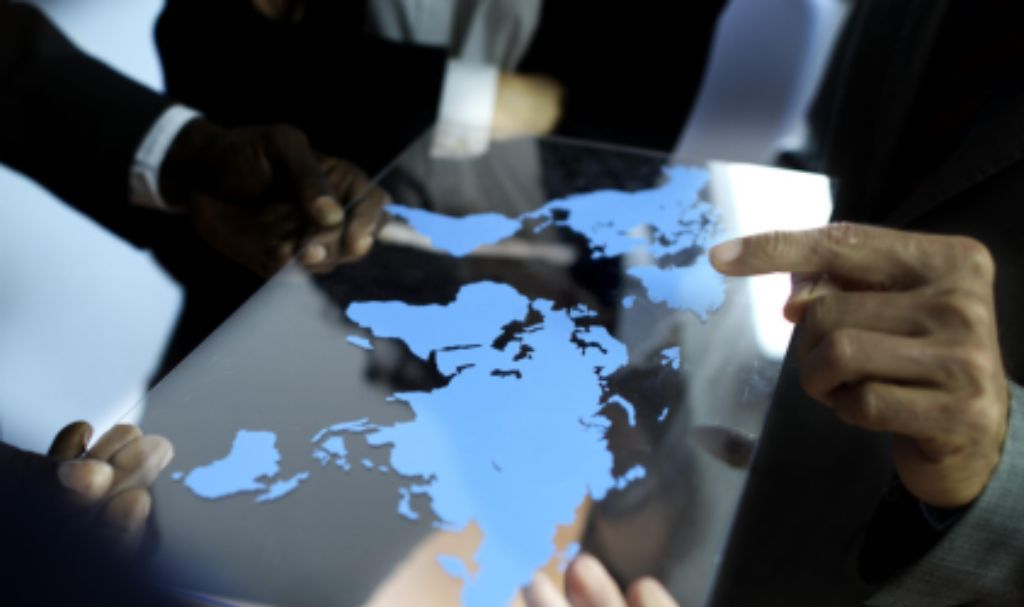Real Estate Link Building That Actually Works: Earn Local Authority, Rankings, and Better Leads Without Spam
Dec 10, 2025

Dec 10, 2025

Dec 10, 2025

Dec 09, 2025

Dec 09, 2025

Dec 05, 2025

Dec 05, 2025

Dec 04, 2025

Dec 04, 2025
Sorry, but nothing matched your search "". Please try again with some different keywords.


Regulating AI technology comes with special challenges that are considerably different from those faced by conventional industries. Yes, AI technology challenges are real in the modern business landscape in 2025.
The speed at which AI is being developed and implemented into many phases of daily life and major infrastructure requires a reflective approach to regulation so as to reap its benefits while avoiding risks.
Perhaps the most serious among these challenges is the global dimension of the technology. AI technology is transnationally operated, and its development involves having different international actors involved, making it impossible to be regulated in localized terms.
This subsection addresses the initial challenges of coming up with a single global perspective that is adequate in reflecting the multi-faceted nature of AI technology. Yes – today, I’m going to touch upon the biggest AI technology challenges faced by businesses across the globe. Stay tuned!

So, without wasting time, let’s look at the biggest AI technology challenges faced by businesses across the globe:
Regulation of AI compliance is a major concern, especially globally. The international scope of AI systems renders them possible to create in one nation, implement in another, and utilise by customers elsewhere. Diffusion makes it more challenging to exercise control and jurisdiction.
Moreover, the faster advancement of AI technology makes the slower legislative processes so that the law lags behind technological feasibility.
International law continuously depends on states’ cooperation and adherence, which can have varying capacities as well as interests in implementing AI regulations. This section discusses the challenges of implementing international AI laws and agreements and emphasizes having effective global enforcement capable of easily overcoming such challenges.
Regulation of AI compliance is a major concern, especially globally. The international scope of AI systems renders them possible to create in one nation, implement in another, and utilise by customers elsewhere. Diffusion makes it more challenging to exercise control and jurisdiction.
Moreover, the faster advancement of AI technology makes the slower legislative processes so that the law lags behind technological feasibility.
International law continuously depends on states’ cooperation and adherence, which can have varying capacities as well as interests in implementing AI regulations. This section discusses the challenges of implementing international AI laws and agreements and emphasizes having effective global enforcement capable of easily overcoming such challenges.
Effective regulation of AI technology across the globe will also depend on the comprehensiveness and sophistication of international cooperation. The United Nations, through its institutions and bodies like UNESCO and ITU, plays an important role in promoting dialogue and generating global standards.
Furthermore, multilateral alliances and accords between states can help in harmonizing regulations and ensuring cooperative approaches to AI management.
Such collaboration is not only important to formulate standards but also to exchange research, best practices, and technology to provide greater compliance and adaptation of AI systems in a socially responsible and ethical way.
AI technology also poses pressing ethical questions that cut across countries. They are questions of privacy, surveillance, bias, autonomy, and the general implications of machine decision-making. Various cultures have different ethical bearings on these questions, and they are thus more challenging to implement universally consistent norms for the regulation of AI.
The following discusses such ethical challenges and how they impact international policy-making and diplomacy. It also points out the efforts being made to develop a unified ethical framework that can be used to guide the development and use of AI technologies worldwide.
Achieving a balance between the stimulation of technological innovation and the demands for measures that support safety, privacy, and ethical guidelines being followed is a fundamental requirement in AI regulation.
There is a fine balance between having too little regulation and having severe social and ethical issues, and too much regulation, which essentially hinders technological progress and innovation. This chapter discusses how the different regions of the world are reacting to this balance and what can be learned from their experiences.
It reinforces the need for dynamic, flexible regulatory policies that are able to keep pace with tech developments without discounting the potential benefit that AI is capable of bestowing upon society.
With more content being generated through AI, a new regulatory aspect is arising: AI humanizers – tools designed to make AI text sound more natural and human-like. Although the potential of these technologies exists to enhance communication, marketing, and accessibility, they also make it more difficult to distinguish human from machine creativity and create concerns about transparency, consent, and disinformation.
Regulating the employment of AI humanizers worldwide poses the additional complication that their work can easily go undetected and flow across borders. Setting international usage standards of use, disclosure, and ethical use of such tools will be required to provide accountability without diminishing their utility.
With AI technology becoming more popular and sophisticated, one thing is clear – the dangers of using artificial technology are increasingly becoming louder and riskier. While I have highlighted the top six issues with AI technology regulation above, here are some other potential challenges that you are most likely going to face while relying heavily on artificial intelligence:
With the integration and deepening of AI in the many fields of international importance, an integrated global regulatory system becomes ever more necessary.
The system would ensure international cooperation and compliance and tackle the many challenges outlined in the preceding sections. In the future, all stakeholders—governments and private interests, civil societies and international institutions—must come together to set principles and standards for the responsible development and deployment of AI technologies.
This reality reinforces the need for global dialogue and concerted action to address the intricacies of the regulation of AI technology in the global community.
Barsha is a seasoned digital marketing writer with a focus on SEO, content marketing, and conversion-driven copy. With 7 years of experience in crafting high-performing content for startups, agencies, and established brands, Barsha brings strategic insight and storytelling together to drive online growth. When not writing, Barsha spends time obsessing over conspiracy theories, the latest Google algorithm changes, and content trends.
View all Posts
Real Estate Link Building That Actually Works...
Dec 10, 2025
Why Health-Conscious Consumers Choose Blockch...
Dec 10, 2025
How To Buy Xupikobzo987Model? Decoding The Mo...
Dec 09, 2025
Workplace Management EWMagWork: Is This Smar...
Dec 09, 2025
Social Media Stuff EmbedTree: Is This Digita...
Dec 05, 2025

